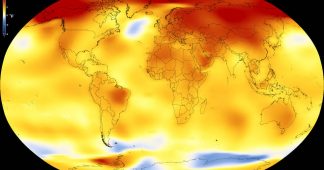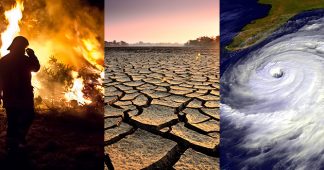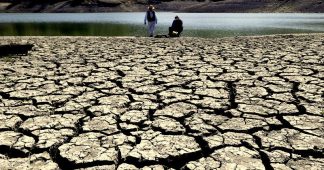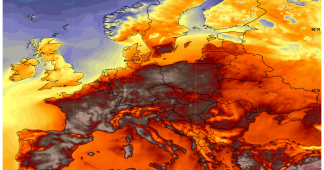Europe sees first heatwave of the year
28 June 2019
Many parts of Europe are experiencing the first heatwave of the year as a result of warm air masses from Africa, setting new daytime and overnight temperature records for June. The heat poses a risk to people’s health, agriculture and the environment.
It is premature to attribute the unusually early heatwave to climate change, but this is consistent with climate scenarios which predict more frequent, drawn out and intense heat events as greenhouse gas concentrations lead to a rise in global temperatures.
Meteo-France says the heatwave will peak Friday 28 June and issued a maximum red alert for several areas. It reported a new national temperature record of 44.3°C at Carpentras in the Vaucluse (SE France), beating 44.1°C at Conqueyrac on 12 June 2003. This record is provisional as the temperature may rise. This followed a new national average afternoon temperature of 34.9°C on 26 June – the warmest ever for June. Temperatures in many parts of southern France topped 40°C. Grospierre in the Ardeche saw 42°C, and St Julien de Peyrolas in Gard province was 41.9°C. There have also been minimum overnight temperature records. Toulouse set a new overnight record of 24.2°C 26/27 June, Nantes was 24.2°C and Limoges was 25.7°C.
The Spanish national meteorological and hydrological agency AEMET issued a red alert for heat as temperatures top 40°C in parts of northern Spain (Teruel, Navarra, Barcelona, Ampurdan and Lledia). It also warned of very high to extreme wildfire risk, as a wildfire raged in Catalonia.
The Deutscher Wetterdienst said that 51 observing stations recorded new June temperature records and that 39 stations measured temperatures above 35°C on 25 June. It announced a new national temperature record for June on 26 June of 38.6°C recorded at a weather station in Berlin.
Austria is expected to have its warmest June on record, 4.5°C above the long-term average and ahead of 2003, according to the national meteorological and hydrological service ZAMG.
More than half of Switzerland’s observing stations measured new June temperature records on Wednesday. Out of 85 stations, 43 recorded June temperature records and six saw an absolute record. This includes Davos at 1594 meters with a temperature of 29.8°C.
Temperatures above 40 °C were recorded in some places in In North Africa. Serious concerns have been raised about the well-being of players at the ongoing Africa Cup of Nations in Egypt as a consequence of extreme heat.
WMO’s European regional climate monitoring centre operated by the Deutscher Wetterdienst issued a Climate Watch on 25 June about “above-normal temperature for the next week over large parts of Europe.”
Temperatures in central Europe are expected to be between 3°C and 6°C above the long-term average, and 1°C to 3°C above average over remaining areas, according to the regional centre at Offenbach (Germany). A daily maximum temperature above 30°C is expected for most of the area during most of the time, partly above 35°C.
It warned that drought may accompany the heatwave in some areas, especially in Eastern Europe, whilst frequent thunderstorms with locally large hail are expected in Eastern Central and South-Eastern Europe. There will be a risk of heat stress for vulnerable people and of wildfires, it said.
The regional climate monitoring centre provides guidance information in a pre-operational mode for national meteorological and hydrological services, which are responsible for issuing warnings and advice in their own territory.
Heat-health
National meteorological and hydrological services in Europe are working closely with national and local authorities on heat-health action plans to protect lives. These heat-health early warning systems have activated civil protection efforts across the region.
The heatwave in Europe follows extreme heat episodes in Australia, India, Pakistan and parts of the Middle East in 2019. More are expected to follow during this northern hemisphere summer.
Heat events kill thousands of people every year and often trigger secondary events such as wildfires and failures to electrical grids.
Between 2000 and 2016 the number of people exposed worldwide to heatwaves increased by an estimated 126 million. Urbanization compounds the problem. Heat stroke, dehydration, cardiovascular and other temperature related diseases are major health risks.
WMO is therefore stepping up joint action with the World Health Organization to try to tackle health risks posed by extreme weather, including heatwaves, and air pollution, with a special focus on urban areas.
WMO also supports the Global Heat Health Information Network.
Further information at WHO European Office – advice for heat
Published at https://public.wmo.int/en/media/news/europe-sees-first-heatwave-of-year











